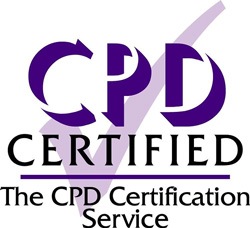Banter, Bullying and Harassment- Understanding the boundaries

When most people think of bullying, they think of the experiences of children or teenagers, but the truth is, bullying is also experienced by a huge number of adults in the workplace. In fact, in 2015 a poll from TUC stated that 29% of people had been the victims of workplace bullying (almost 3 in every 10 workers).
Shockingly, 72% of those cases were carried out by a manager- and more than one in three (36%) of the people who reported bullying, said they left their job because of it.
So, what is bullying in the workplace?
According to the UK government bullying is any behaviour that “makes someone feel intimidated or offended".
Examples of this may be:
- Remarks made to belittle you in front of others
- Rumour spreading
- Favouritism with opportunities and training options to others rather than yourself
- A manager demanding higher workloads than others
- Humiliating comments
- A manager or boss deliberately refusing to let you fulfil your job properly and use/ develop your skills to your potential
Whilst bullying isn’t illegal, harassment, (when the unwanted behaviour is related to disability- or any of the other protected characteristics) certainly is.
Bullying and disability
Sadly, for people with a disability, bullying in the workplace is even more prevalent. In a recent study from Scope, 53% of people with disabilities had experienced bullying or harassment at work, 21% of people with disabilities had been bullied by colleagues and 27% had experienced bullying from their employer.
In many cases, bullying can go unseen or under the radar, especially when cloaked by a playful teasing that delivers negative insults under a disguise of humour- often referred to as banter.
Banter and Bullying- Understanding where the line is
Humour in the workplace has always been a fantastic way for us to bond, build camaraderie, develop relationships- and let’s face it get through the day! But there are times when the lines between banter and bullying can become blurred. Harmless teasing among close colleagues can be a positive way of reducing tension and relieving stress, as well as connecting with others. However, as soon as the content of this communication becomes inappropriate or offensive, hurting the feelings or belittling one of the people involved, then we delve into the realms of bullying and harassment which can potentially end in claims of harassment and discrimination. This is particularly the case if the bullying is related to a protected characteristic covered by the Equality Act 2010.
Such cases related to banter have risen dramatically in recent years. In fact, a report in the Financial Times, stated that employment tribunal claims related to banter in the workplace increased 44% between 2020 and 2021.
So how can we tell the difference between the two?
The Anti-Bullying Alliance (ABA) states that ‘banter’ may not constitute all the elements of bullying, but that doesn’t mean it’s acceptable. They also offer the following four points for guidance for understanding when something isn’t banter: You would be upset if someone said it to you. It’s hurtful for someone. You aren’t friends with the person. Someone has asked you to stop.
The ABA also has lots of tips and pointers for drawing the line and understanding the difference here.
Harassment cases and hidden disabilities
In a recent case (‘Hagi v Royal Mail Group Limited’), it was shown that even if an employer/colleague isn’t aware of a disability, ignorance doesn’t protect you from liability, and a harassment claim can still be successful.
In this particular case a postal worker with schizophrenia, filed a claim for harassment related to her disability that was hidden, and employers were completely unaware of. The employee’s colleague/manager had asked her to remove a personal bag with belongings that included medical supplies, from the environment she was working in. Whilst the manager was within his rights to ask the staff member to remove her bag, his behaviour in doing so was inappropriate and ‘violated her dignity’.
Even though the manager had no knowledge of the worker’s disability, his behaviour was still considered harassment. The tribunal said: “We do not consider this to prohibit his conduct from being disability-related because Hagi’s possession of the bag and what was inside of it were both related to her impairment.”
The lack of knowledge of the disability was not of any relevance. The conduct was inappropriate- and was connected to the employee’s disability, which was enough to violate the Equality Act 2010.
What can be done to prevent bullying and harassment
It goes without saying that having an ED&I strategy that focuses on disability as much as other protected characteristics, is essential. In addition, there should be clear policies built around harassment and bullying prevention, and these should be regularly refreshed, updated, and circulated, with all employees at all levels of seniority made aware that bullying will not be tolerated in the workplace. You should also make the process of making a complaint very clear to all employees.
Having a simple and straightforward process of action, should anyone need to file a grievance, is also essential. And, be prepared for bullying/ harassment to have taken place in areas other than the office such as online, written, verbally, over the phone, via emails or over social media.
Providing training for management (given bullying so frequently happens at this level) is also advisable, so managers are aware of exactly what bullying is, what the parameters between banter and bullying are, and generally how to best manage staff (especially those with a disability). Make it clear in all your internal and external materials that you are a company that is proud to be inclusive and make this a clear part of your ethos and branding.
Above all- change your workplace culture by becoming more disability aware and make sure staff at every level from the top down have a good foundation of awareness training, with regular refreshers. This should cover the Equality Act 2010, communication, etiquette, terminology and use of language.
Take training with a user-led provider who can explain the ins and outs of workplace bullying, harassment and discrimination and can also offer guidance on how more senior staff members can support people with disabilities.
This training will not only make your staff more aware of bullying, the policies you have in place, and that you have a ‘zero tolerance’ approach- but also it will improve each staff member’s understanding, and their levels of empathy around people with disabilities.
Chris Jay – Managing Director – Bascule Disability Training



